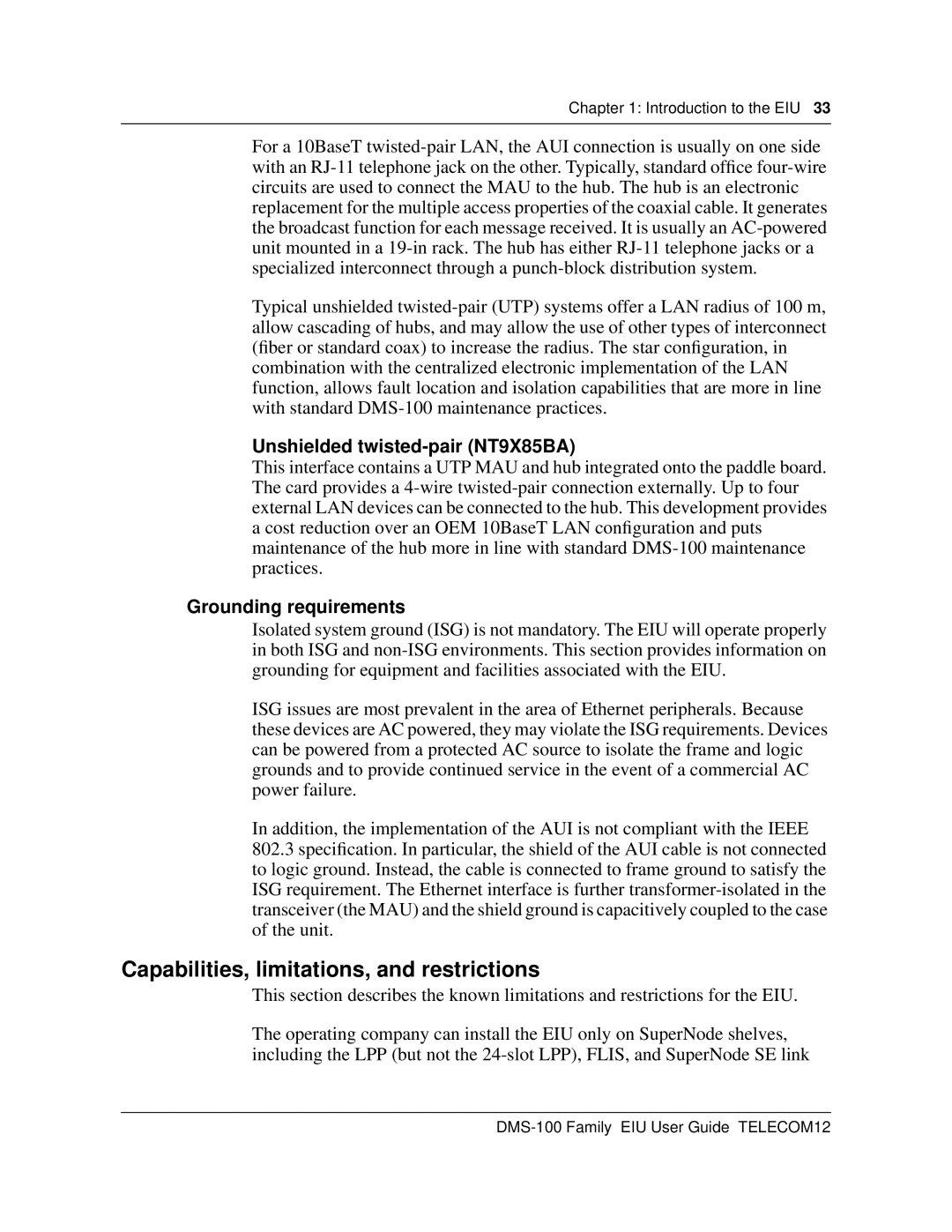
Chapter 1: Introduction to the EIU 33
For a 10BaseT
Typical unshielded
Unshielded twisted-pair (NT9X85BA)
This interface contains a UTP MAU and hub integrated onto the paddle board. The card provides a
Grounding requirements
Isolated system ground (ISG) is not mandatory. The EIU will operate properly in both ISG and
ISG issues are most prevalent in the area of Ethernet peripherals. Because these devices are AC powered, they may violate the ISG requirements. Devices can be powered from a protected AC source to isolate the frame and logic grounds and to provide continued service in the event of a commercial AC power failure.
In addition, the implementation of the AUI is not compliant with the IEEE
802.3specification. In particular, the shield of the AUI cable is not connected to logic ground. Instead, the cable is connected to frame ground to satisfy the ISG requirement. The Ethernet interface is further
Capabilities, limitations, and restrictions
This section describes the known limitations and restrictions for the EIU.
The operating company can install the EIU only on SuperNode shelves, including the LPP (but not the
